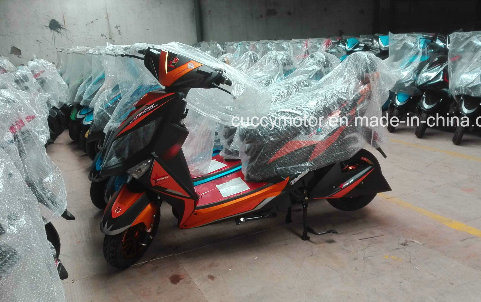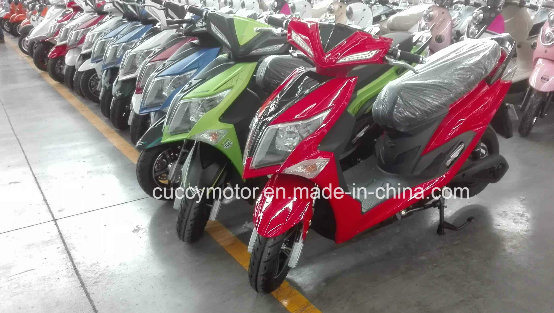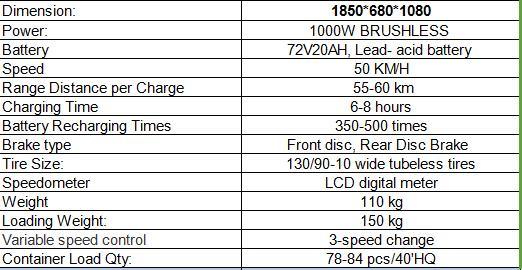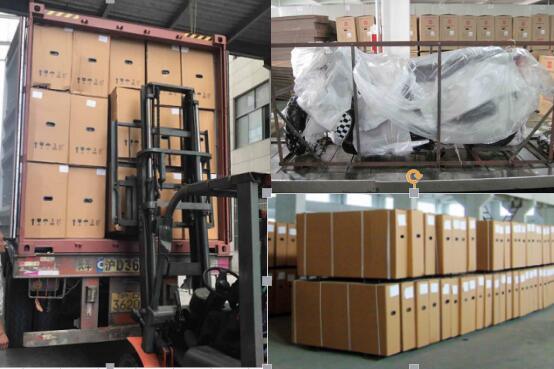


Packing and Container Loading:

Company Profile
WUXI CUCCY MOTOR TECHNOLOGY CO., LTD was originally established as CUCCI VEHICLE GROUP in 1998. We now operate under our brand "CUCCY" and have become a leading manufacturer in the e-vehicle industry. Our main products include e-scooters, e-motorcycles, e-bikes, and e-tricycles, alongside traditional gasoline tricycles. Our annual output exceeds 350,000 to 500,000 units, and we focus on rigorous testing and inspection of every product before it reaches the market. With extensive experience in custom design and production, we tailor our products to meet the specific requirements of different countries. Each region has unique road conditions, which means quality standards vary. Our team specializes in researching these markets to ensure our products are not only high-quality but also well-suited for local use. This approach makes our products more durable and efficient for different environments. We also pride ourselves on offering comprehensive after-sales support to our dealers. Our technical team is available to assist with any issues, helping you grow your business more effectively. If you work with us, you'll receive professional guidance throughout the sales process and even when setting up your own assembly plant. Technical Sales Service:
1. We provide 1% of easily worn-out parts for your after-sales service. 2. We can help you choose the most needed parts for your market. 3. Our professional technical team is ready to assist with any problems you may face. 4. All parts come with a one-year warranty. 5. We offer full technical support during your sales process or if you plan to build an assembly plant in the future. --- Let me know if you'd like a more promotional or formal version!
1. Based on Flow Arrangement
-
Parallel Flow (Co-current Flow):
-
Both fluids flow in the same direction.
-
Temperature difference is highest at the inlet and decreases along the length.
-
-
Counter Flow (Counter-current Flow):
-
Fluids flow in opposite directions.
-
Maintains a more uniform temperature difference, leading to higher efficiency.
-
-
Cross Flow:
-
Fluids flow perpendicular to each other.
-
Commonly used in air-cooled heat exchangers.
2. Based on Construction and Design
-
Shell and Tube Heat Exchanger:
-
Consists of a series of tubes enclosed in a shell.
-
One fluid flows through the tubes, and the other flows outside the tubes within the shell.
-
Suitable for high-pressure and high-temperature applications.
-
-
-
Uses thin, corrugated plates stacked together to create channels for fluid flow.
-
Compact design with high heat transfer efficiency.
-
Ideal for low to medium-pressure applications.
-
-
Plate and Frame Heat Exchanger:
-
A type of plate heat exchanger with a frame to hold the plates together.
-
Allows for easy cleaning and maintenance.
-
-
Plate-Fin Heat Exchanger:
-
Uses fins sandwiched between plates to increase surface area for heat transfer.
-
Common in aerospace and cryogenic applications.
-
-
Spiral Heat Exchanger:
-
Consists of two spiral channels wound around a central core.
-
Compact and efficient for handling viscous fluids or slurries.
-
-
Double Pipe (or Hairpin) Heat Exchanger:
-
Simplest design with one pipe inside another.
-
Suitable for small-scale applications or high-pressure scenarios.
3. Based on Heat Transfer Mechanism
-
Direct Contact Heat Exchanger:
-
Fluids come into direct contact with each other.
-
Example: Cooling towers.
-
-
Indirect Contact Heat Exchanger:
-
Fluids are separated by a solid barrier (e.g., tubes or plates).
-
Example: Shell and tube, plate heat exchangers.
-
-
Regenerative Heat Exchanger:
-
Uses a heat storage medium to transfer heat between fluids.
-
Example: Rotary regenerators or fixed-matrix regenerators.
4. Based on Application
-
Air Cooled Heat Exchanger:
-
Uses air as the cooling medium.
-
Common in power plants and refineries.
-
-
Liquid Cooled Heat Exchanger:
-
Uses liquid (e.g., water or oil) as the cooling medium.
-
-
Condensers:
-
Converts vapor into liquid by removing heat.
-
-
Evaporators:
-
Converts liquid into vapor by adding heat.
-
-
Boilers:
-
Generates steam by heating water.
5. Based on Phase Change
-
Single-Phase Heat Exchanger:
-
Both fluids remain in the same phase (liquid or gas) throughout the process.
-
-
Two-Phase Heat Exchanger:
-
Involves a phase change (e.g., condensation or evaporation) in one or both fluids.
-
-
-
-
-
-
-
-
-
Heat Exchange Unit,Heat Exchange Units,Heat Transfer Btu,Heat Exchange Units Home
Siping Juyuan Hanyang Plate Heat Exchanger Co., Ltd , https://www.tj-heatexchange.com
